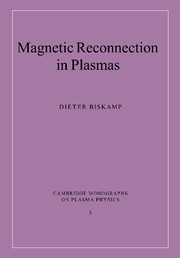8 - Magnetospheric substorms
Published online by Cambridge University Press: 23 December 2009
Summary
The magnetosphere is the cosmic plasma laboratory nearest to the Earth, which is therefore accessible to detailed ground and in-situ observations. It is, loosely speaking, a magnetic cavity generated by the interaction of the solar wind with the Earth's dipole field, which shields the Earth from direct bombardment by high-energy particles. This shield is, however, rather leaky, allowing solar-wind plasma to penetrate into the magnetosphere, which gives rise to a variety of different phenomena, the most spectacular being the aurora. The leakiness is mainly due to large-scale reconnection processes occurring at the front and in the tail of the magnetosphere. These processes form the main topic of this chapter.
The magnetosphere has a complex onion-like structure consisting of various plasma layers of distinctly different properties separated by rather sharp boundary surfaces. In section 8.1 we give a brief overview of the main features and outline the mechanisms leading to this layered structure. For a more detailed introduction to magnetospheric physics see, e.g., Baumjohann & Treumann (1996).
Reconnection is believed to be the main mechanism responsible for the magnetic processes observed in the magnetosphere, commonly called geomagnetic activity. The basic model of magnetospheric reconnection and plasma convection has been proposed by Dungey (1961) and this is considered in section 8.2. Reconnection of the dipole field (which is essentially oriented northward) with a southward component of the interplanetary field opens the magnetic cavity. The reconnected field lines are swept along by the solar wind to the nightside, until the increasing magnetic tension leads to a second reconnection process in the tail, reclosing the dipole field lines, which then contract back toward the Earth.
- Type
- Chapter
- Information
- Magnetic Reconnection in Plasmas , pp. 320 - 356Publisher: Cambridge University PressPrint publication year: 2000



